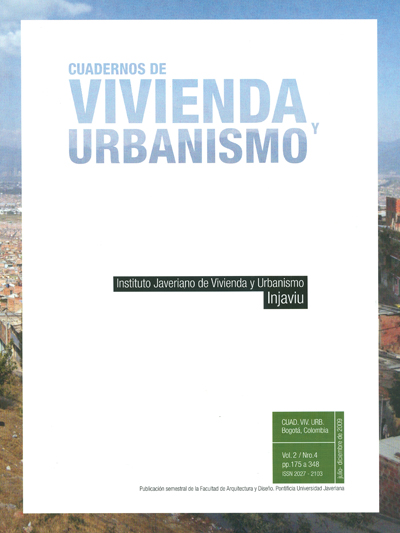Resumen
Las ciudades evidencian procesos degenerativos y de desigualdad como resultado del ajuste político-económico a la globalización. Consecuencias de este fenómeno se observan a nivel barrial, lo que no es sólo el resultado del abandono de ciertas áreas sino, frecuentemente, es consecuencia directa o indirecta de acciones públicas. Los gobiernos están desarrollando políticas públicas y acciones para la regeneración de áreas deterioradas, con objetivos diversos, destacando la cohesión social como una prioridad. Este artículo se propone comparar y analizar las intervenciones desplegadas en Cataluña (Llei de Barris) y Chile (programa Quiero mi Barrio). Ambas iniciativas declaran basarse en enfoques integrales, por lo que resulta importante analizar la existencia de mecanismos para la coordinación e implementación de acciones transversales -sociales, físicas y/o económicas- que requieren acciones consorciadas y la inclusión de los principales actores concernidos. Una preocupación del equipo investigador es indagar en la relación entre el diseño de esas políticas y su traducción en prácticas efectivas.
Esta revista científica se encuentra registrada bajo la licencia Creative Commons Reconocimiento 4.0 Internacional. Por lo tanto, esta obra se puede reproducir, distribuir y comunicar públicamente en formato digital, siempre que se reconozca el nombre de los autores y a la Pontificia Universidad Javeriana. Se permite citar, adaptar, transformar, autoarchivar, republicar y crear a partir del material, para cualquier finalidad (incluso comercial), siempre que se reconozca adecuadamente la autoría, se proporcione un enlace a la obra original y se indique si se han realizado cambios. La Pontificia Universidad Javeriana no retiene los derechos sobre las obras publicadas y los contenidos son responsabilidad exclusiva de los autores, quienes conservan sus derechos morales, intelectuales, de privacidad y publicidad.
El aval sobre la intervención de la obra (revisión, corrección de estilo, traducción, diagramación) y su posterior divulgación se otorga mediante una licencia de uso y no a través de una cesión de derechos, lo que representa que la revista y la Pontificia Universidad Javeriana se eximen de cualquier responsabilidad que se pueda derivar de una mala práctica ética por parte de los autores. En consecuencia de la protección brindada por la licencia de uso, la revista no se encuentra en la obligación de publicar retractaciones o modificar la información ya publicada, a no ser que la errata surja del proceso de gestión editorial. La publicación de contenidos en esta revista no representa regalías para los contribuyentes.


